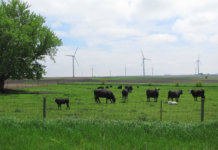The government of Ontario has released the final four steps of the Green Energy Act (GEA). The measures are designed to attract new investment in renewable energy projects and build a green economy that is expected to promote the creation of 50,000 jobs over the next three years.
The guidelines had been eagerly awaited since the act was passed last May.
‘We've been waiting for a while for the rules to come out, and while they are not perfect, it puts Ontario light years ahead of everyone else on the continent,’ says Kristopher Stevens, executive director of the Ontario Sustainable Energy Association.
The GEA introduces North America's first comprehensive feed-in tariff (FIT) program that guarantees specific rates for energy generated from renewable sources. It includes the following features:
– allows all sizes of generators, from homeowners to large developers, to participate;
– has prices that are intended to cover total project costs and provide a reasonable rate of return over a 20-year contract;
– provides incentives for aboriginal and community-based projects;
– has different prices for different technologies and different project sizes; and
– includes domestic content requirements.
The GEA also establishes minimum setbacks for wind turbine projects, as part of the Renewable Energy Approval (REA) process. The setbacks are 550 meters for one to five wind turbines, with distances increasing with the number and the sound-level rating of turbines. The REA is designed to ensure that renewable energy projects are developed in a way that is protective of human health, the environment, and Ontario's cultural and natural heritage.
Stevens notes a loophole with the setback rules.
‘There is recognition that if landowners are participating, then developers would be exempted from that rule,’ he says. ‘If a landowner is leasing their land for turbines or equipment, then they are exempt from the setback provisions.’
The wind energy industry had been requesting the rule be exempted if the majority of landowners agreed to waive the setback requirement.
In addition, the GEA establishes the Renewable Energy Facilitation Office, a one-window access point to assist developers, communities and municipalities obtain information on developing renewable energy projects in Ontario and help them navigate through the regulatory approvals necessary to make the projects a reality.
Finally, Ontario has developed domestic content requirements, which would ensure at least 25% of wind project costs and 50% of large solar project costs come from Ontario goods and labor. Requirements for solar will increase on Jan. 1, 2011, and requirements for wind will increase on Jan. 1, 2012.
SOURCE: Government of Ontario



